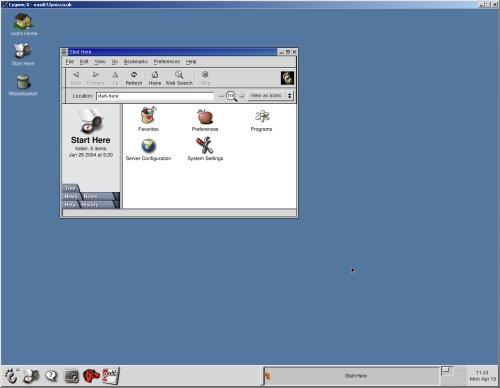Boot from the CD or DVD. At the boot screen, press the "Enter" key.
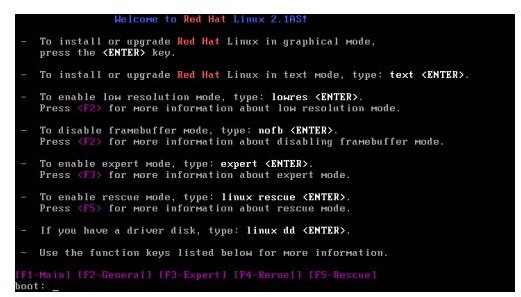
Select the appropriate language, then click the "Next" button.
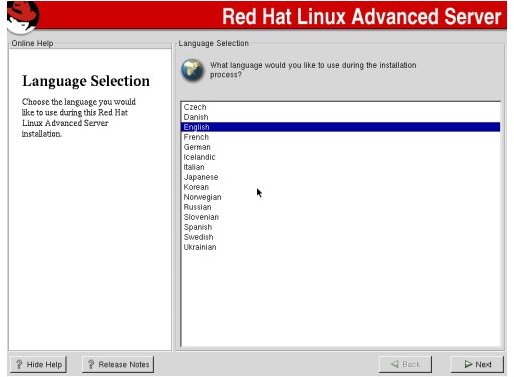
Select the relevant keyboard setting, then click the "Next" button.
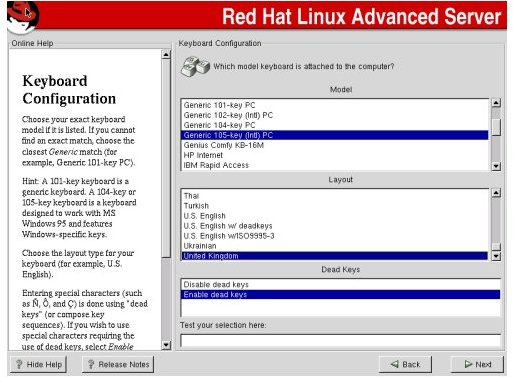
Select your preferred mouse configuration, then click the "Next" button.
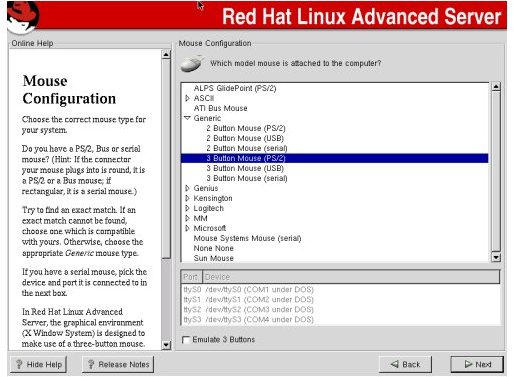
On the "Welcome" screen, click the "Next" button to proceed.
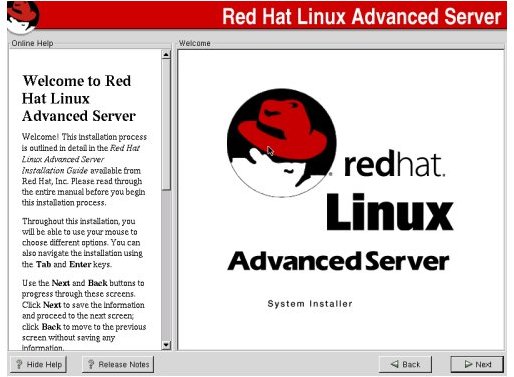
Select the appropriate installation type. The "Advanced Server" options defaults the package selection, while the "Custom" option allows you to select individual package groups and packages. Click the "Next" button to proceed.
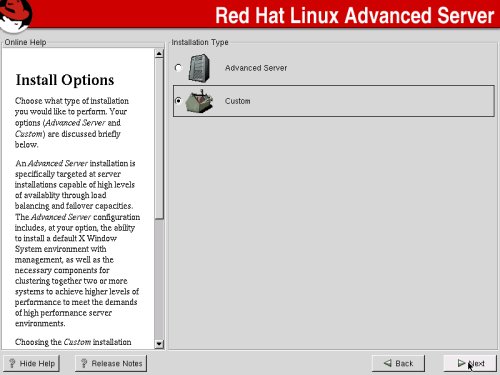
Allow the installer to automatically partition the disk by clicking on the "Next" button.
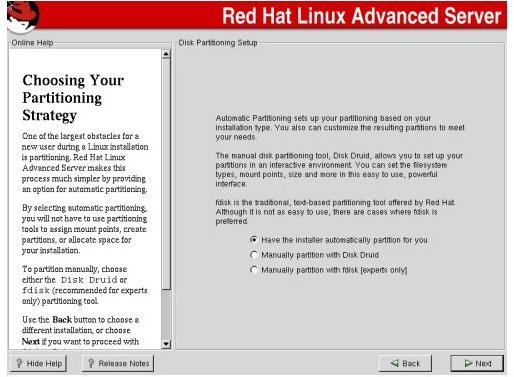
Click the "OK" button on the subsequent warning dialog.
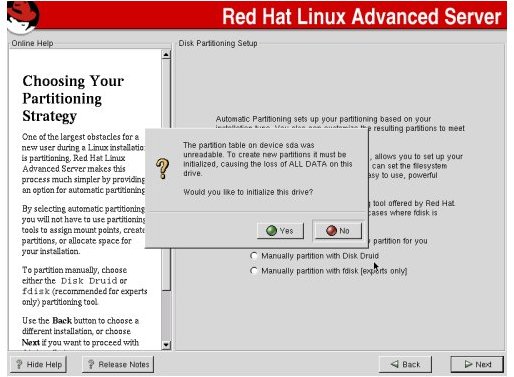
To remove all existing partitions, click the "Next" button.
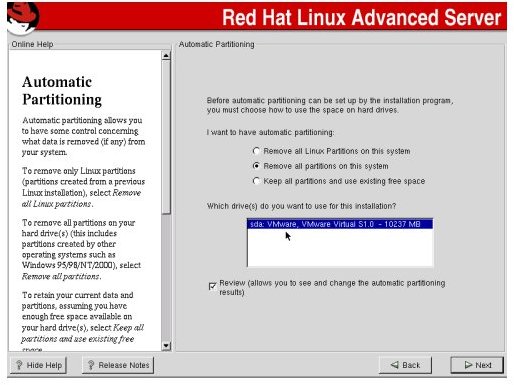
Click the "OK" button on the subsequent warning dialog.
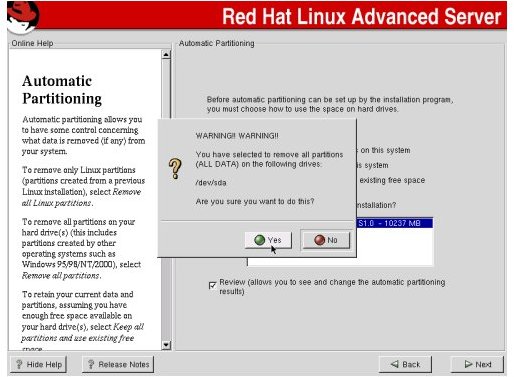
The installer will list the default partitioning scheme for your size disk.
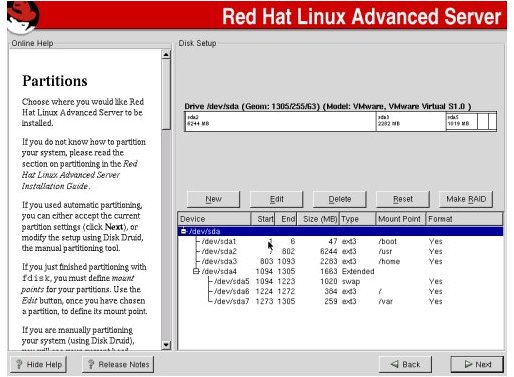
The following screen shots show the actions I take for small test installations.
Edit the "/boot" partition, setting it to "150M" and "Fixed size", then click the "Next" button.
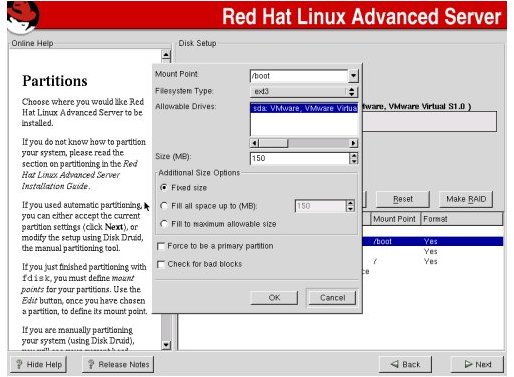
Edit the "/root" partition, setting it to "Fill to maximum allowable size" and "Force to be primary partition", then click the "Next" button.
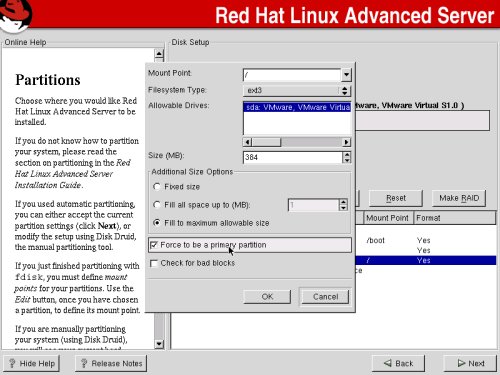
Edit the "swap" partition, setting it to "2048M" and "Fixed size", then click the "Next" button.
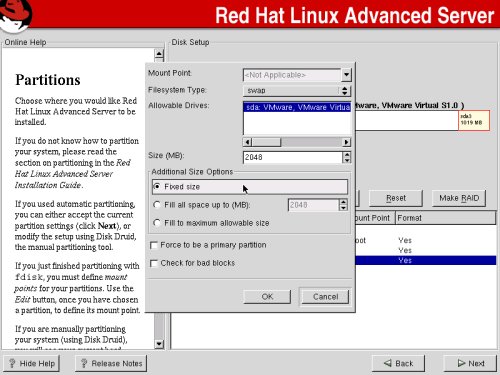
If you need additional swap space, it must be created as additional 2048M partitions.
Delete the additional partitions (/usr, /home, /var), leaving the partitons screen looking like the following picture, then click the "Next" button.

Accept the boot loader settings by clicking the "Next" button.
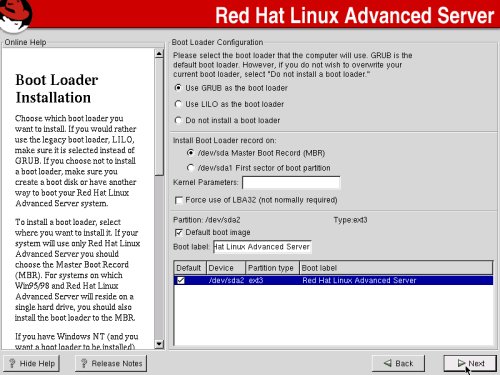
Leave the GRUB password unset by clicking the "Next" button.
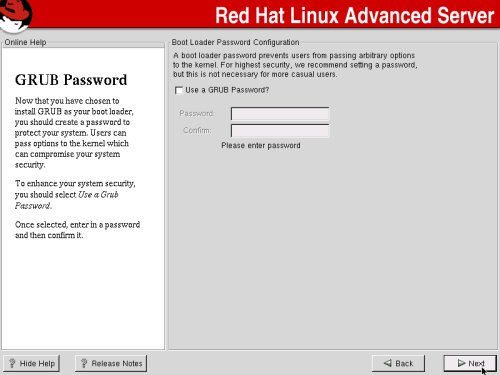
Configure the network interface with the apropriate settings. This can be done automatically using DHCP, or manually. CLick the "Next" button to proceed.
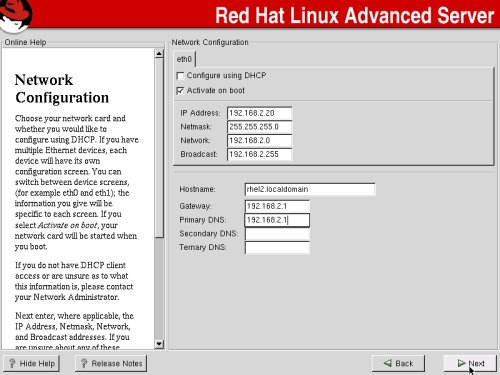
Select the appropriate firewall configuration for your installation. For most test installations I select the "No firewall" option to prevent networking problems during setup. Click the "Next" button to proceed.
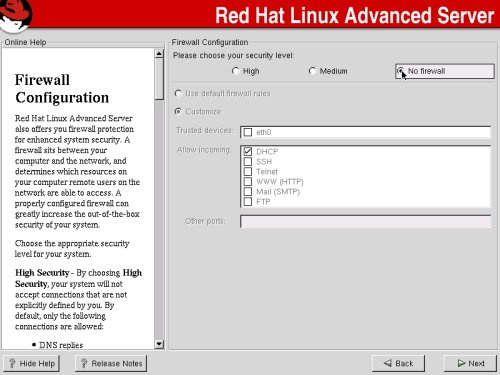
Select the appropriate language support for your installation, then click the "Next" button.
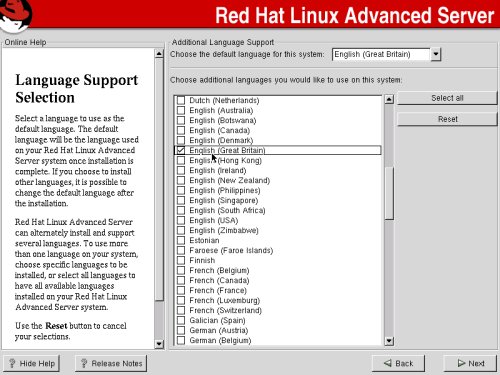
Select the relevant time zone setting by clicking on the map, or selecting it on the selection list. Click on the "Next" button to proceed.
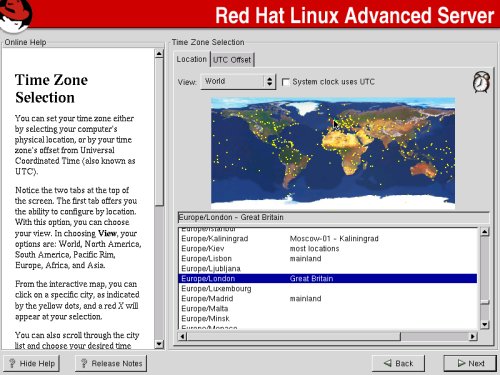
Enter a root password for the server and define any additional user accounts. Click the "Next" button to proceed.
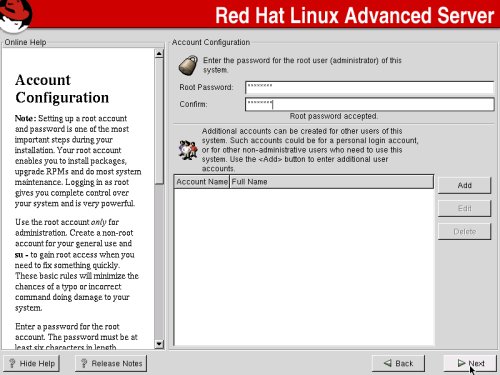
Click the "Next" button to continue.
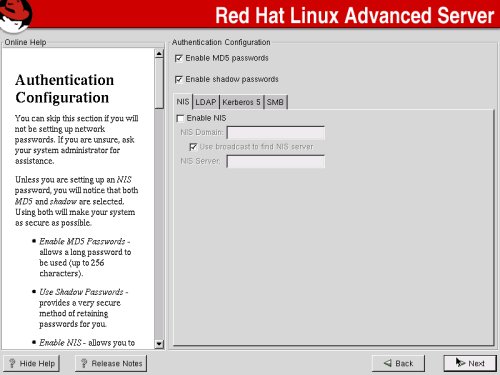
Select the appropriate package groups for your installation and click the "Next" button.
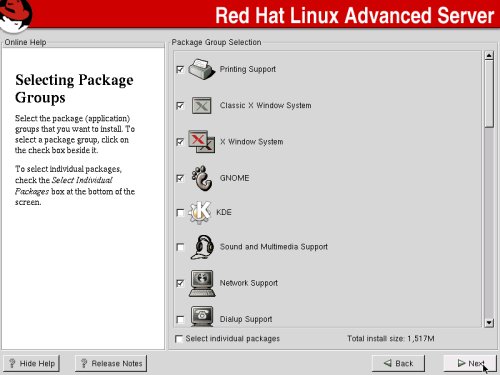
Select the appropriate graphics card for your server. Usually this will default to the correct setting. Click the "Next" button to continue.
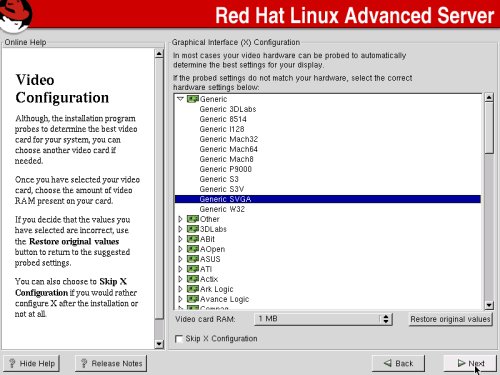
On the "About to Install" screen, click the "Next" button.
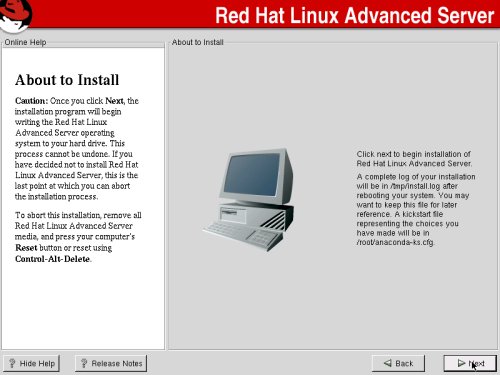
During the installation phase, enter the appropriate CDs as requested.

Check the "Skip boot disk creation" option and click the "Next" button.
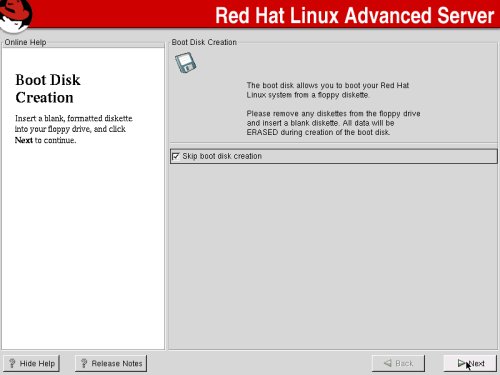
Select the appropriate monitor, or a generic equivalent, then click the "Next" button.
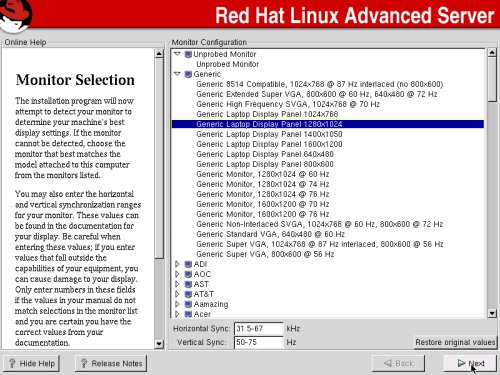
Select the appropriate screen resolution for your graphics card and monitor, then click the "Next" button.
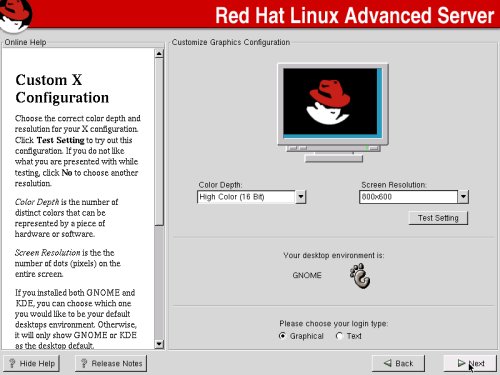
Click the "Exit" button to complete the installation.
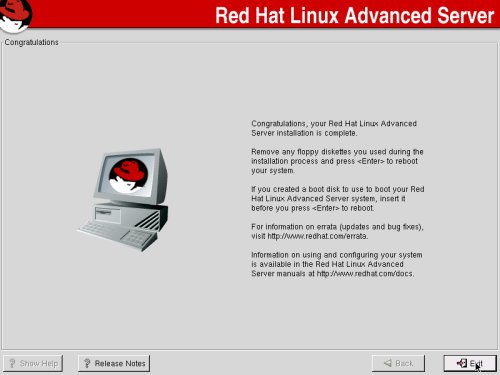
Once the system has rebooted, log in to see the desktop.
